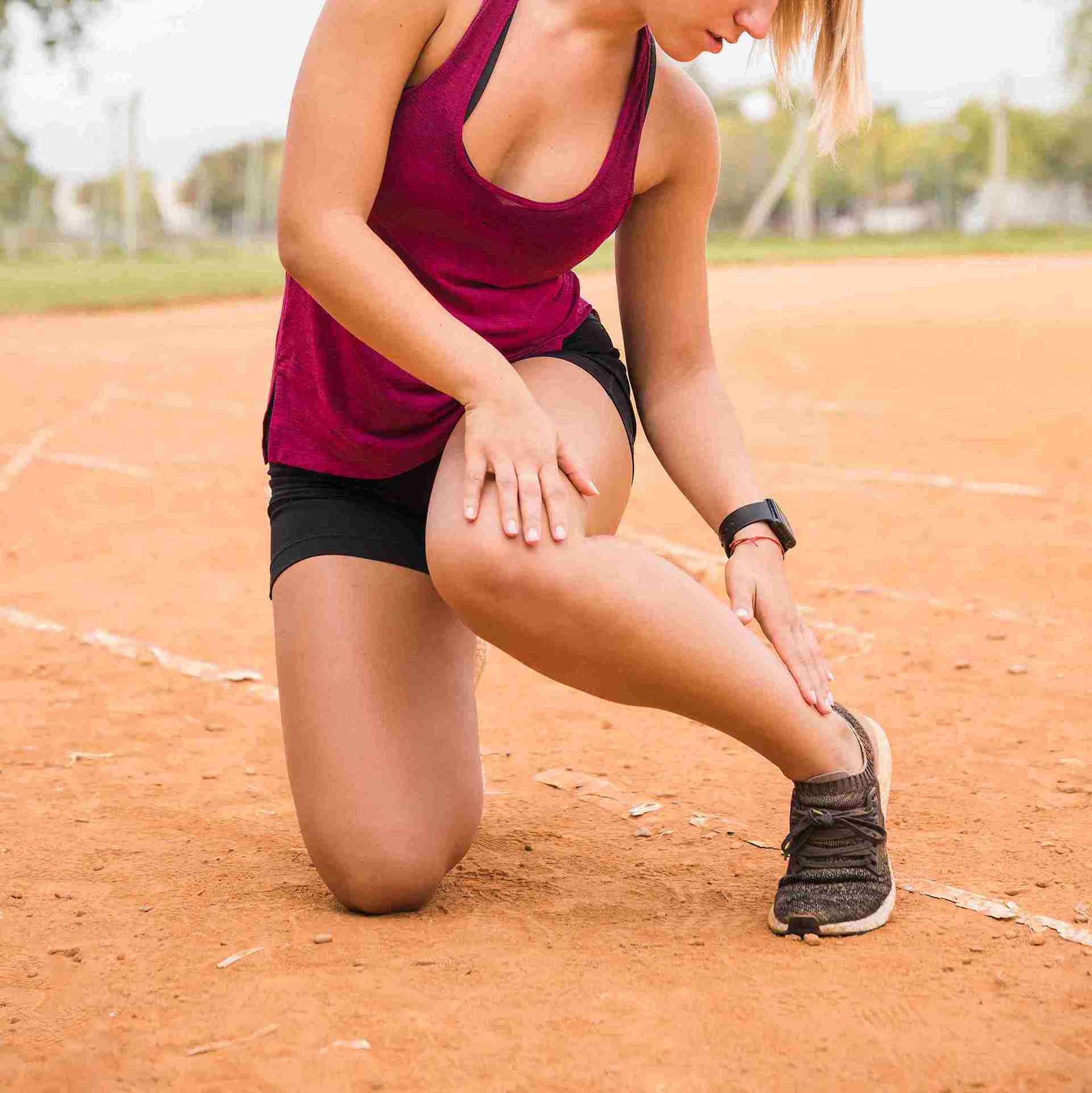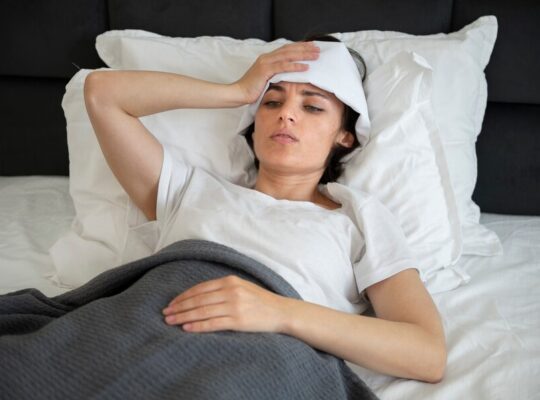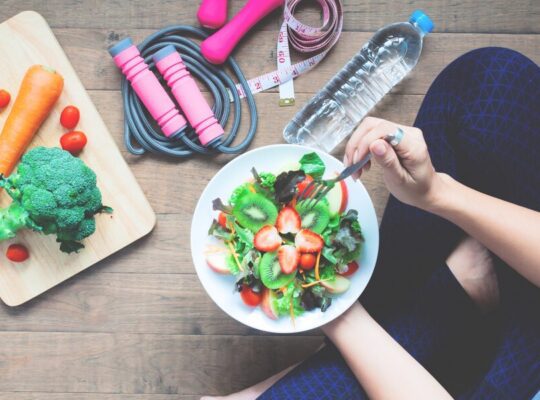It’s possible to lead a pain-free lifestyle once you understand the condition and how to handle it.
What is Runner’s Knee?
Runner’s Knee, also referred to as Patellofemoral Pain Syndrome (PFPS), occurs when the cartilage beneath the kneecap experiences friction. Pain usually occurs at the front of the knee and is felt during activities such as running, squatting, or climbing stairs. While the name suggests that runners are the main victims, anyone who repeatedly puts pressure on their knees can be affected.
Being aware of the causes can help you tackle the problem directly.
Causes of Runner’s Knee
Several factors can contribute to Runner’s Knee:
- Overuse: Repetitive movements like running or jumping can put stress on the knee joint, causing friction between nerves.
- Weak Quadriceps: The muscles around the knee, especially the quadriceps, are responsible for anchoring the kneecap. Weakness in these muscles may cause the kneecap to shift, leading to pain.
- Improper Footwear: Wearing shoes that don’t support your feet properly can affect your running form, leading to knee pain.
- Flat Feet or Overpronation: These conditions increase the risk of knee problems by causing the foot to roll inward.
- Knee Misalignment: An improperly aligned kneecap or abnormal patellar structure can also contribute to knee strain.
Understanding these causes can help you prevent and treat Runner’s Knee.
Symptoms of Runner’s Knee
Typical symptoms include:
- Pain Around the Kneecap: This is one of the most common signs, often felt after exercise or physical activity.
- Swelling: Mild swelling around the kneecap can occur.
- Grinding or Clicking Sensation: You may hear or feel a grinding or clicking sound when you bend or flex the knee.
- Discomfort When Sitting for Long Periods: Sitting with your knees bent for extended periods can cause stiffness or discomfort.
- Difficulty with Stairs: Climbing or descending stairs becomes painful for someone with Runner’s Knee.
Symptoms worsen with activity, so early treatment is crucial to prevent further complications.
About the Treatment
Treating Runner’s Knee often requires a combination of methods:
1. Rest and Ice
Resting your knee is essential. Avoid activities like jogging and jumping that put stress on the joint. Applying ice for 15-20 minutes every few hours can reduce inflammation and pain.
2. Pain Medication
Over-the-counter painkillers, like ibuprofen or paracetamol, help reduce pain and inflammation. However, these should only be used temporarily, as the underlying issue still needs to be addressed.
3. Physical Therapy
A physical therapist can recommend exercises to strengthen the quadriceps and hamstrings. These exercises stabilize the kneecap and lower the chance of future problems. For example, in cases of Chronic Kidney Disease (CKD), exercises should be adjusted to support recovery from Chronic Kidney Disease.
4. Proper Footwear and Orthotics
Wearing well-cushioned running shoes can reduce the load on your knees. For those with flat feet, orthotics or shoe inserts can realign the foot and help treat knee pain.
Prevention
Here are some tips to avoid this painful condition:
1. Warm-Up Before Exercising
Always warm up before starting physical activity. Focus on stretching the muscles around your knee, particularly in your thighs and legs. A good warm-up reduces the risk of injury.
2. Strengthen Your Leg Muscles
Weak muscles around the knee reduce support for the joint. Strengthen your quadriceps, hamstrings, and hips to take the pressure off your knees.
To learn more about strengthening exercises, check out our blog on Building Biceps & Back.
3. Wear the Right Shoes
Choose quality shoes that offer proper support for your feet. If you have flat feet, opt for shoes that provide arch support or visit an orthopedic store for custom orthotics.
4. Avoid Overtraining
Gradually increase the intensity of your workouts. Overtraining can lead to Runner’s Knee. Incorporate rest days into your routine to allow your body to recover.
5. Cross-Train
Incorporate low-impact exercises like swimming or cycling into your routine to reduce stress on your knees while maintaining fitness.
For more tips on fitness and rest, refer to our blog on Time Management.
Risk Factors of Runner’s Knee
Certain factors increase the likelihood of developing Runner’s Knee:
- Gender: Women are more likely to experience Runner’s Knee due to wider hips, which can misalign the knees.
- Age: While it’s common in younger people, anyone can develop Runner’s Knee.
- Previous Injuries: Prior knee injuries increase the risk of developing Runner’s Knee.
- Running on Hard Surfaces: Running on hard surfaces like concrete can lead to knee injuries.
People with conditions like Multiple Myeloma should avoid high-impact sports without consulting a doctor. - Read about Multiple Myeloma.
Exercises to Help with Runner’s Knee
Here are some exercises that can strengthen your knee muscles and alleviate pain:
1. Straight Leg Raises
Lie on your back with one leg straight and the other bent. Lift the straight leg a few inches off the ground, hold for a few seconds, and then slowly lower it. Repeat on both sides.
2. Clamshells
Lie on your side with your knees bent at 90 degrees. Keeping your feet together, lift your upper knee as high as possible without moving your hips. Lower the knee slowly and repeat.
3. Hamstring Stretches
Sit with one leg extended and the other bent. Reach for the toes of the extended leg, holding the stretch for about 30 seconds. Repeat on the other side.
Learn more about breathing techniques during exercises in our post on Breathing In or Out.
Nutrition and Knee Health
Diet plays an essential role in joint health. Here are some nutrients that support knee health:
- Omega-3 Fatty Acids: Found in fish, flaxseeds, and walnuts, these reduce inflammation and knee pain.
- Calcium and Vitamin D: These nutrients are crucial for bone health. Include dairy products, leafy greens, and fortified plant-based milk in your diet.
- Antioxidants: Foods like strawberries, spinach, and nuts are rich in antioxidants that reduce inflammation.
For a joint-friendly diet, check out our blog on Cholesterol-Lowering Diet Plan.
When to See a Doctor
While Runner’s Knee can often be treated at home, see a doctor if:
- The pain persists despite rest and treatment.
- Your knee feels warm or swollen.
- You experience sharp, stabbing pain during activity.
- Your knee buckles or feels unstable.
In rare cases, surgery may be needed, as is sometimes the case with Soft Tissue Sarcoma.
FAQs
1. What is Runner’s Knee?
Runner’s Knee is a condition that causes pain around the kneecap, especially during activities that put pressure on the knee joint.
2. What causes Runner’s Knee?
Causes include overuse, weak thigh muscles, and misaligned kneecaps.
3. What are the treatments for Runner’s Knee?
Treatments include rest, ice, pain medication, physical therapy, and wearing proper shoes.
4. Is Runner’s Knee preventable?
Yes, through warm-ups, strengthening exercises, and proper footwear.
5. Is Runner’s Knee serious?
It isn’t life-threatening but can cause severe pain if left untreated.
6. Which exercises help relieve Runner’s Knee?
Exercises like straight leg raises, clamshells, and hamstring stretches can help.
7. How long does it take to recover from Runner’s Knee?
Recovery varies, but most people heal within weeks to several months.
8. Does Runner’s Knee affect people with flat feet?
Yes, flat feet can increase the likelihood of knee misalignment.












